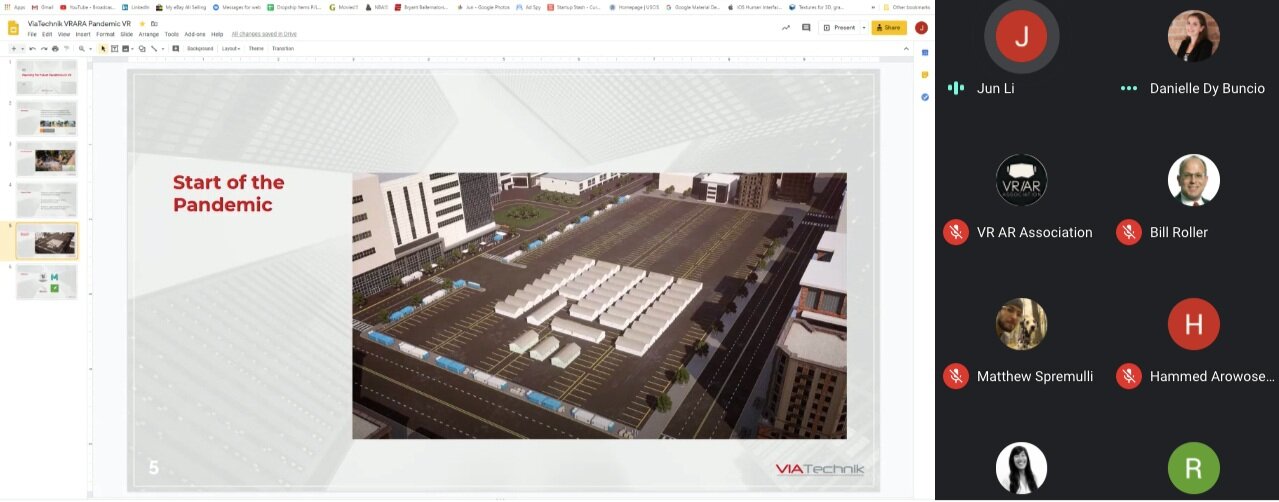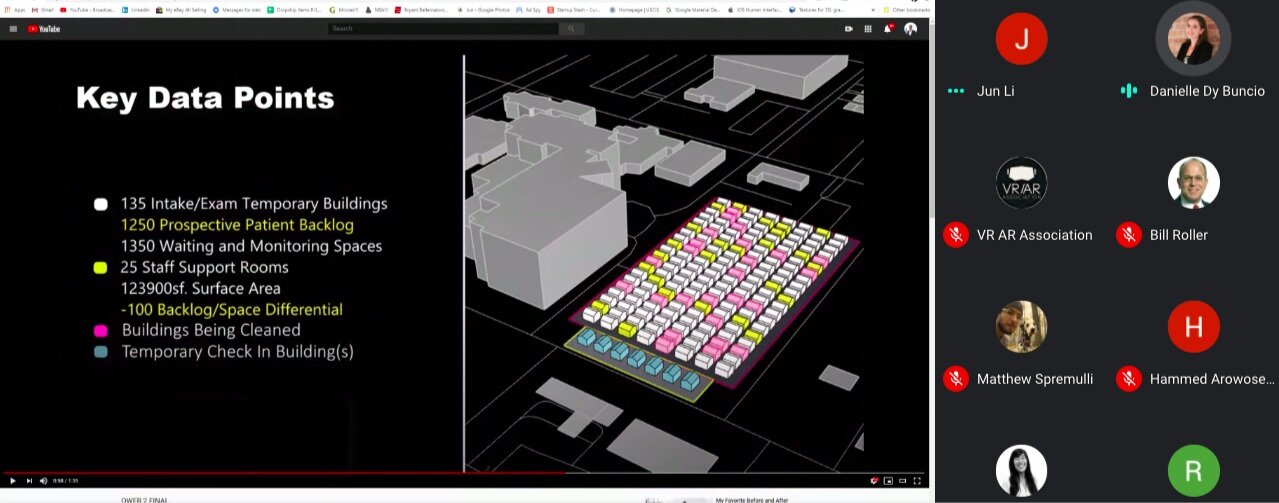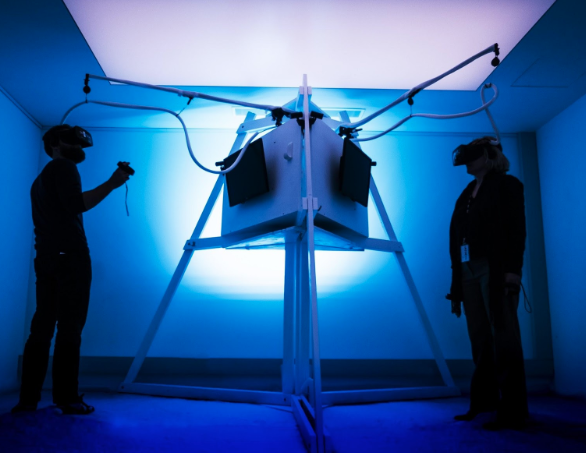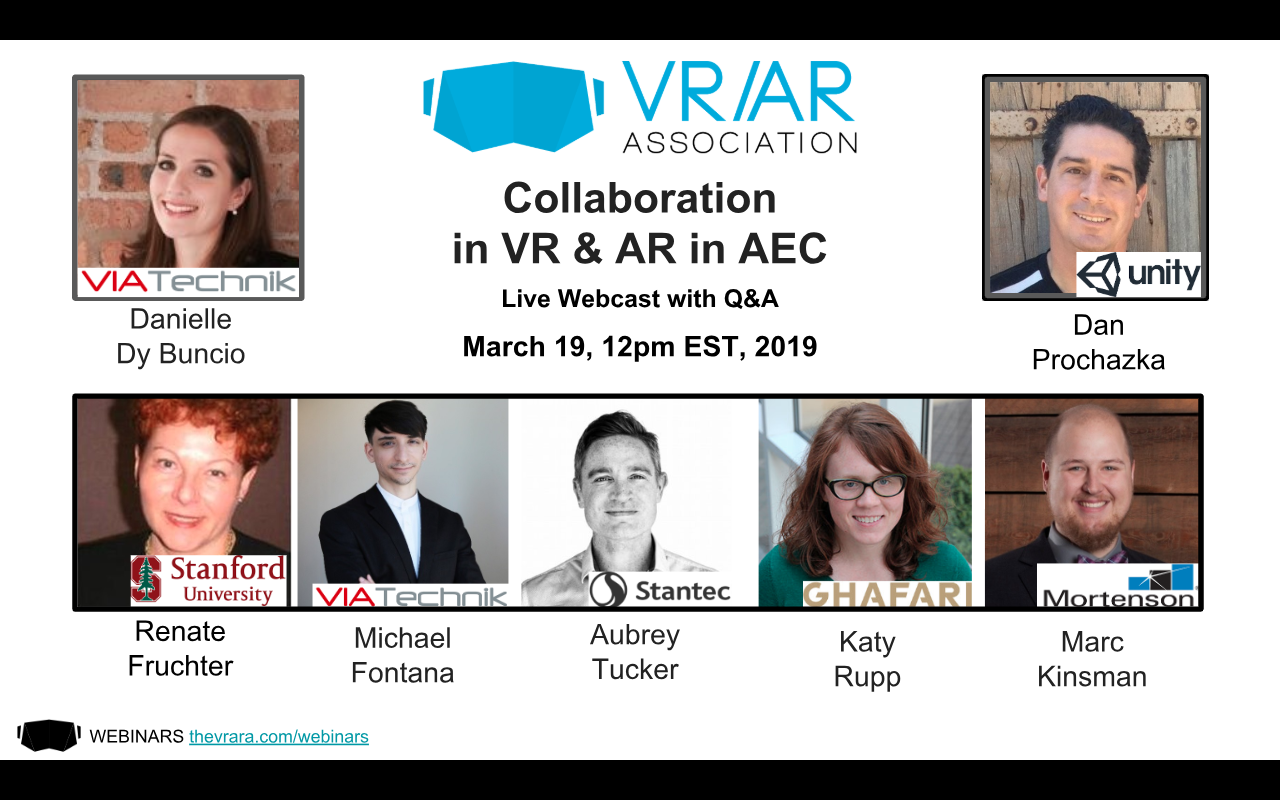The VR/AR Association AEC Committee is dedicated to crafting a set of guidelines, best practices, and calls to action for the use of VR, AR, and MR tools in the architecture, engineering, and construction industry. This is the first installment in what we hope will become an ongoing discussion on the wide-ranging benefits of these emerging technologies in the broader AEC space. Join our Committee here.
While the first head-mounted display (HMD) debuted back in 1968, virtual reality (VR) has only started to come into its own in the last several years. In fact, IDC estimates that global revenues for the augmented and virtual reality (AR/VR) market grew by a remarkable 130.5% over the last two years, leaping from $6.1 billion in 2016 to $13.9 billion in 2017. What’s more, the AR/VR market is expected to achieve a compound annual growth rate of nearly 200% between now and 2020.
As the technology continues to mature — and as HMDs become increasingly affordable — VR will revolutionize the way in which AEC stakeholders approach their work. Indeed, from improving the safety of worksite operations for contractors to facilitating cooperation between architects and structural engineers during the design process, immersive — and even interactive — virtual environments have already begun to change our industry for the better.
But if there’s one group of AEC stakeholders that’s particularly well-positioned to take advantage of everything VR has to offer, it’s real estate owners/investors and the tenants to whom they market.
With VR, There Are Many Places Like Home
Selling possible tenants on a property’s potential has always been one of the most frustrating parts of real estate. People looking to rent or buy an asset spend hours driving — or even flying, if they’re from out of town — to different buildings to get a feel not only for the unit in which they’re interested, but for the building and neighborhood in which it’s located.
Sellers’ agents have become adept at crafting flashy slideshows and even video walkthroughs to give potential tenants an idea of what a property has to offer, but these kinds of collateral will never replicate the experience of wandering through a physical space in person. VR not only offers a way to bridge this divide, but provides an incredible boost to efficiency, as well — for real estate professionals and potential tenants.
“Previously, potential buyers had to travel to visit a property. Now, this step can be skipped thanks to VR,” explains Rentberry’s Oksana Tunikova. “There’s no limit on the number of people who can view the same property at one time, and potential buyers can see dozens of properties in a fraction of the time.”
VR doesn’t merely improve the efficiency of the property touring endeavor, however. It also improves the depth and, ultimately, the effectiveness of a tour. According to the National Association of Realtors, “77% of buyers’ agents say staging a home makes it easier for a buyer to visualize the property as [their] future home.” Further, 50% of sellers’ agents report that staging a home increases the dollar value of buyers’ offers by as much as 6% to 10% — and 62% of sellers’ agents agree that staging a home decreases the time a property sits on the market.
In short, convincing a potential tenant to make an offer on a property begins with helping them picture themselves living (or working) there, and there’s no better way to do so than by letting them “experience” the property virtually. As VR expert Boaz Ashkenazy puts it, “Virtual reality’s photorealism can zoom in on selling-point details of surfaces and lighting, as well as immerse you in views from a veranda that feel utterly real. Potential buyers or renters now have an emotional connection to what they’re experiencing.”
Companies like roOomy already enable sellers’ agents to virtually stage a property with “digital decorations” that align with each potential buyer’s tastes, and it’s only a matter of time before this kind of digital staging makes its way into the VR space. Once this occurs, potential tenants will be able to insert fixtures and furniture closely resembling their own into any property, completely redefining the meaning of a “personalized tour.”
Exploring a Building Before It’s Built
From an investor’s perspective, VR has the power to dramatically improve project pitching. Simply put, the human mind struggles to visualize size and scale in the abstract, making it all but impossible for us to accurately transpose two-dimensional design drawings — or even to-scale 3D renderings — into a mental image of a lived space. This innate shortcoming is a real obstacle for anyone attempting to evaluate a building that exists only on a page or a screen.
With VR, these issues are no longer a problem. “This [technology] will allow architects and clients alike to truly understand the spatial qualities of a project,” says The Future Group’s Kim Baumann Larsen. “This spatial understanding should make clients more confident in the design and reduce time spent in meetings and the use of lateral design revisions.”
Of course, all of these benefits — for real estate agents, tenants, architects, and investors — are only realized when everyone has access to well-designed, truly immersive VR simulations. Different VR environments are rendered at different levels of detail — from rough, non-photorealistic polygons to hyperrealistic responsive objects — and at this still early stage of technological development, it takes a true VR design expert to tailor each environment to its situational demands.
From physically-based rendering tools used to mimic the way light reflects off different shapes and textures to sculpting tools like ZBrush used to craft intricate objects like sculptures or ornate lamp posts, VR designers must be familiar with a wide range to tools in order to produce top-notch AEC virtual experiences. When they get it right, however, the results speak for themselves:














